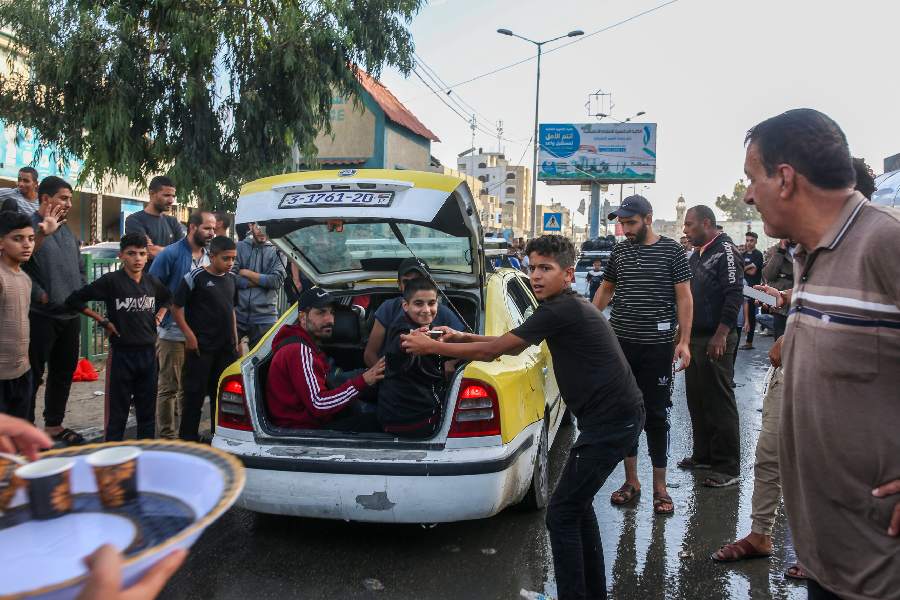The director general of the United Nations’ World Health Organization, Tedros Adhanom Ghebreyesus, said the U.N. had verified more than 250 attacks on health care facilities in the Gaza Strip and the West Bank, including hospitals, clinics, ambulances and patients, with five hospitals hit in the past week.
The United Nations Security Council convened an emergency meeting Friday focused on the health crisis in Gaza, but attacks on hospitals dominated the discussion. As the meeting began, U.N. officials and diplomats said they were receiving reports of fighting outside Rantisi Hospital and Shifa Hospital, which was struck Friday.
“The situation on the ground is impossible to describe,” Tedros said. “Hospital corridors crammed with the injured, the sick, the dying. Morgues overflowing. Surgery without anesthesia. Tens of thousands of displaced people sheltering at hospitals.”
Tedros told the Security Council that the WHO had also documented 25 attacks on Israeli health care facilities.Israel’s ambassador to the United Nations, Gilad Erdan, said Hamas’ main command headquarters was under Shifa Hospital. Hamas and the hospital have denied that allegation.
Erdan criticized the U.N. and the Security Council, accusing them of receiving “every single information” from Hamas’ leaders and of failing to call out Hamas for its atrocities.
“What about Hamas’ exploitation of hospitals, ambulances and medical clinics for terror in Gaza?” Erdan asked the council, saying Hamas operated tunnels underneath and adjacent to the hospitals.
Marwan Jilani, director-general of the Palestine Red Crescent Society, told the council that he had rewritten his speech several times as the situation around Gaza hospitals deteriorated Friday. He said patients and tens of thousands of civilians taking shelter at hospitals were at risk from direct and indirect fire.
Twenty people were injured, and one killed, by direct fire at Shifa Hospital, Jilani said.“The health sector in Gaza is under attack,” he told the council. “Hospitals are being deliberately targeted in a desperate attempt to force the civilian population out of Gaza.” He said four hospitals had been targeted in the past 24 hours.
Hospitals in Gaza are facing extraordinary challenges, including a lack of fuel and electricity, which has forced doctors to operate in the dark and to prioritize which patients should get care. Surgeons have had to operate, including amputating limbs, without anesthesia. Disease is spreading because of lack of food, water and hygiene, U.N. officials and Jilani said.
“The wounded are no longer being treated for their injuries,” Ghassan Abu-Sittah, a British Palestinian surgeon volunteering at Shifa Hospital, said in a post on X, formerly known as Twitter, on Friday night. “They are being [stabilized] the best they could.”
At Quds Hospital, where 40,000 displaced Palestinians are sheltering, the main generator was shut down after it ran out of fuel, and Jilani said there was a real possibility that all patients in its intensive care unit and babies in incubators would die.
Calls for a cease-fire have intensified at the United Nations, with officials and many diplomats calling for an immediate halt to the fighting to save trapped civilians and deliver humanitarian aid at scale. The Security Council, however, remains divided over the wording of a legally binding resolution. Russia, China, France and some other members are insisting on language demanding a cease-fire, while the United States is rejecting calls for a cease-fire and asking for the resolution to include Israel’s right to defend itself.
Diplomats said one proposal being floated was to introduce multiple resolutions, addressing one issue at a time. They said Malta, a nonpermanent member of the council, was working on a resolution that would focus only on protecting children in Gaza and ensuring they received adequate care.
In Gaza, medical staff have coined a new abbreviation, WCNSF: “Wounded Child, No Surviving Family,” said Lana Zaki Nusseibeh, the United Arab Emirates’ ambassador to the council. “Let that sink in.”
“Medical staff tell us that they are in fear of their lives and the lives of their patients being taken,” Nusseibeh said. “And they do not know if they will make it until the morning.”
The New York Times News Service











